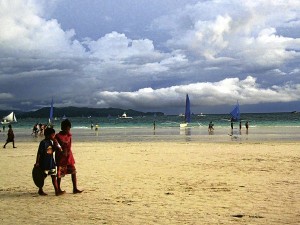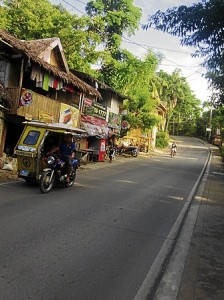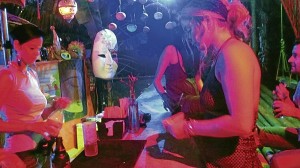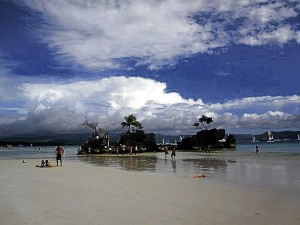January 24, 2012, 4:47pm

Apo Reef aerial shot
MANILA, Philippines — The resort town of Sablayan in Occidental Mindoro unveils its fun side as it celebrates its 110th founding day and Dugoy Festival this month of January.
Situated on the western coast of the biodiversity-rich Mindoro island, the town takes pride in Apo Reef Natural Park, a Unesco World Heritage Site and the second largest contiguous atoll-like reef coral reef in the world.
A center for marine biodiversity, Apo Reef has a high diversity of corals and marine life, and has an island covered with terrestrial vegetation.
According to Sablayan Mayor Eduardo Gadiano, the fun has already begun with various sporting tournaments, socio-civic activities, entertainment and cultural events.
He said that the celebration will highlight the town’s amazing ecotourism hideaways which can rival even the more established destinations.
A few minutes away from the town is Pandan Island, a palm-lined white beach island and unspoilt forest. One can explore the island’s forest and gaze at the colorful species of birds before splashing in the waters of “Wild Lagoon”.
Outdoor lovers can trek Mindoro Pines, dubbed as Mindoro’s “Little Baguio” which sits atop the Pag-asa Mountains, the habitat of Mindoro endemic pine tree specie, pinus mercussi. Located at the heart of Mangyan ancestral lands, immersion with the ethnic communities is a unique cultural experience.
There’s also Mts. Iglit-Baco National Park, which is also an ASEAN Heritage Park with multi-strata evergreen forests and habitat of the biggest remaining population of tamaraw, the country’s national animal. It has an aggregate area of 106,600 hectares, with more than half of it lying within Sablayan.
Conservationists can lose themselves at Siburan Forest, which boasts of 5,000 hectares of primary forest, the largest tract of its kind in Mindoro. It is sanctuary to 31 kinds of birds, among them the endemic Mindoro imperial pigeon, Mindoro tarictic hornbill, Mindoro bleeding heart, scops-owl and the black-hooded coucal, more than eight mammal species mammals, like pygmy fruit bat and warty pig and some 80 tropical plants and hardwood species.
Near the base of the forest is Libuao Lake, where one can bask fishing, bird watching, picnicking and boating in one of the country’s cleanest inland bodies of water.
Another nature escape is the 20-foot Malatongtong Falls whose scenic verdant forest backdrop rushes into a natural crystal clear pool towards smaller cascades flowing into the river.
Back in the heart of the town are the Parola Park and the 16th-century old Spanish church which attest to Sablayan’s historicity, as well as a Golden Gate-inspired hanging bridge. The public plaza, also known as Presing Park, is punctuated by a watchtower and a circa 1860 cannon built against Muslim raiders and intruders from the sea.
For a taste of local heritage, take a peek at Sablayan Museum, the only one of its kind in the province, which showcases the town’s character. A unique feature is the “nature” section which simulates the town’s forest and underwater world.
Gadiano said festivities conclude with the Dugoy Festival on Jan. 27 to mark the town’s founding day in 1902 under the American Civil Government. The event’s highlight is a street presentation which pays tribute to the Mangyan tribes of the town, the indigenous inhabitants of Mindoro.
He noted that even after celebrations had died down, the fun goes on for the rest of the year with its natural wonders. Log on to www.sablayan.net on how to enjoy the fun in amazing Sablayan.
Published in Manila Bulletin







